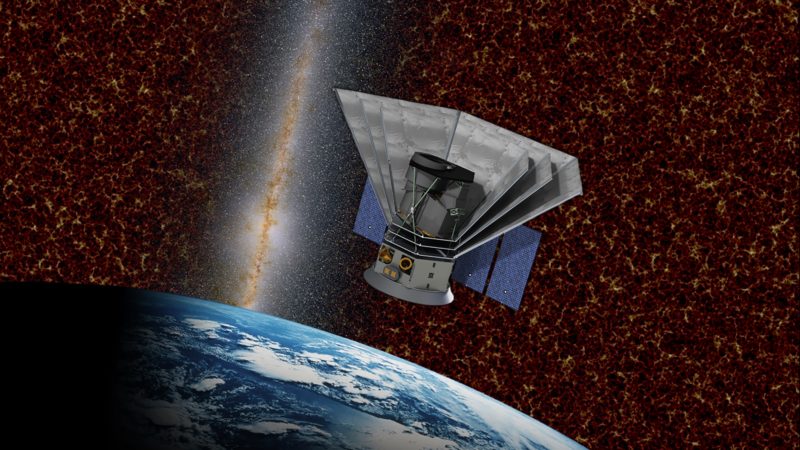
SpaceX is targeting no sooner than 4:31 a.m. EST Sunday, 7 February, for the launch of a previously-flown booster and yet another 60-strong “batch” of Starlink low-orbiting internet communications satellites from historic Pad 39A at the Kennedy Space Center (KSC) in Florida. The seasoned B1049 first-stage core—which last year secured records as the first Falcon 9 to successfully return from a fifth flight and the first to launch six and seven times—will attempt an eighth outing, tying with her frequent-flying sister B1051.
Also Thursday, NASA announced it had selected SpaceX for a $98.8 million launch services contract to deliver its Spectro-Photometer for the History of the Universe, Epoch of Reionization and Ices Explorer (SPHEREx) aloft from Vandenberg Air Force Base, Calif., no sooner than 17 June 2024.
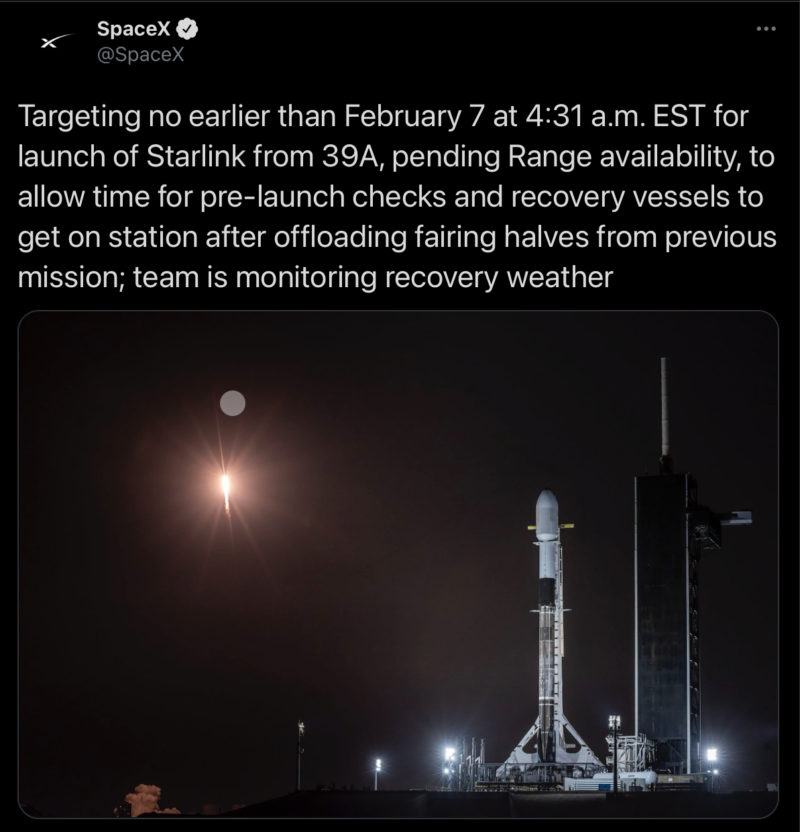
Two days ago, hopes seemed high that SpaceX would fly a pair of Falcon 9s some four hours apart on Thursday, the first at 1:19 a.m. EST from Space Launch Complex (SLC)-40 at Cape Canaveral Space Force Station, Fla., the second at 5:36 a.m. EST from Pad 39A at KSC. It would have marked the shortest interval between two launches from the Space Coast since the manned flight of Gemini XII and the unmanned flight of its Gemini-Agena Target Vehicle (GATV), way back on 11 November 1966.
Sadly, it was not to be. Although the first mission launched on time from SLC-40 yesterday morning, “additional time for pre-launch checks” forced SpaceX to push the launch of the second mission by B1049 from Pad 39A back to 5:14 a.m. EST Friday. This would still have achieved an empirical record for SpaceX in flying two missions, for the first time, on two successive days.
But again, it was not to be. Late Thursday, the Hawthorne, Calif.-headquartered launch services organization announced another postponement to Sunday at the soonest. “Targeting no earlier than 7 February at 4:31 a.m. EST,” it was noted, “pending Range availability, to allow time for pre-launch checks and recovery vessels to get on-station after offloading fairing halves from previous mission.” And it added: “Team is monitoring recovery weather.”
Although SpaceX has remained characteristically tight-lipped about the processing of its boosters, B1049 has endured several delays in recent days. Originally assigned a placeholder launch date of no earlier than 27 January, the exceptionally busy nature of last month—which saw three Falcon 9 missions from the Space Coast in three weeks, whose first-stage hardware returned to alight twice on the Autonomous Spaceport Drone Ship (ASDS) “Just Read the Instructions” and once on her sister “Of Course I Still Love You”—caused this date to slip inexorably into early February.
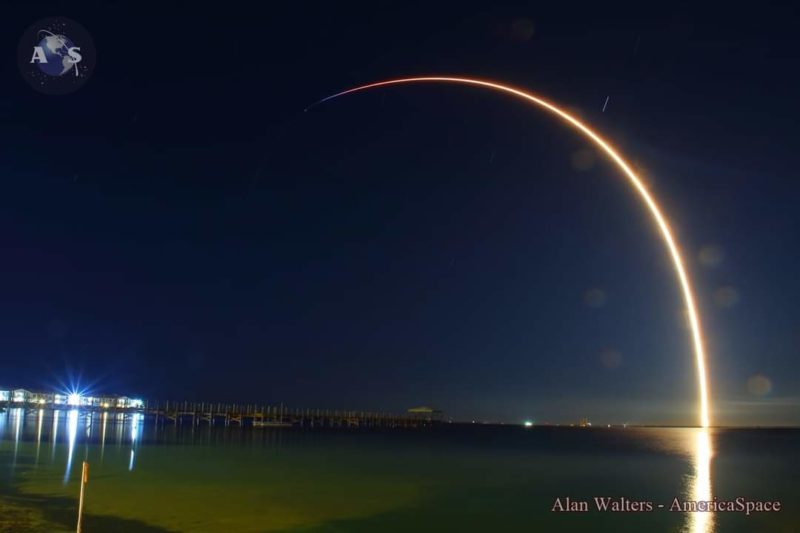
An apparently aborted Static Fire Test of B1049’s nine Merlin 1D+ engines last Friday led to a second successful attempt on Sunday, with high hopes that the veteran booster might fly on Tuesday.
However, poor predicted weather in the ASDS recovery zone prompted a domino-like slippage to Wednesday, then Thursday, then Friday and eventually Sunday. When she does finally launch, B1049 will add an eighth flight to her impressive tally of missions, which began way back in September 2018 when she lifted the heavyweight Telstar 18V communications satellite on the first leg of its trek to geostationary altitude, some 22,300 miles (35,900 km) above the planet. Next, she went cross-country to Vandenberg Air Force Base, Calif., to deliver the final ten-strong batch of Iridium NEXT global mobile communications satellites in January 2019.
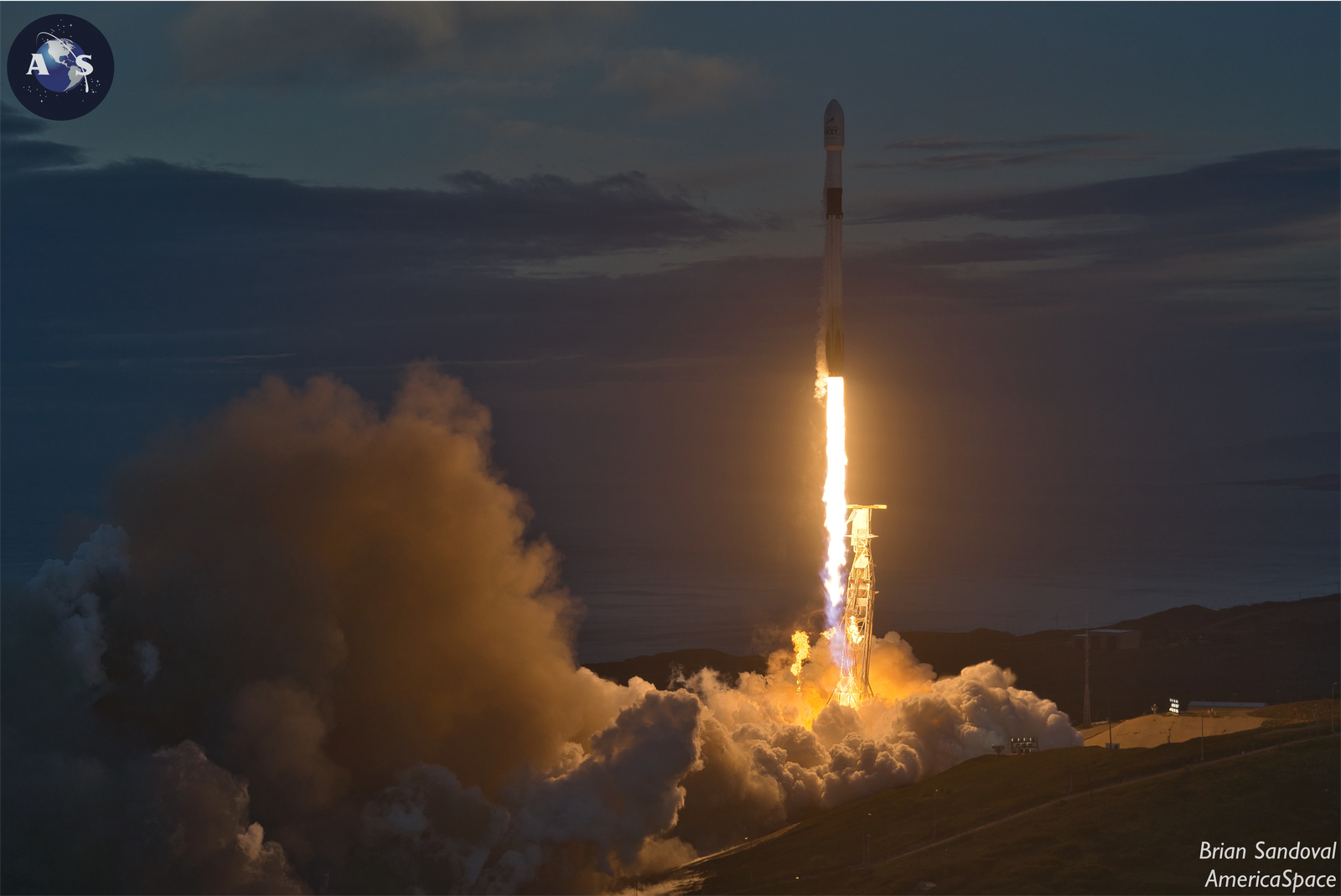
Since then, B1049 returned to the East Coast and flew a record-setting five batches of Starlink satellites—298 birds in total—between May 2019 and November of last year. On her most recent flight, she recorded the 100th launch of a Falcon 9 since June 2010.
With Sunday’s mission, she will become the first booster to launch six loads of Starlinks, bringing her personal tally to 358, almost a third of the total number of these small, flat-packed internet communications satellites launched so far. And with an expected touchdown on “Just Read the Instructions”, she will become the first Falcon 9 to land as many as eight times on a droneship; B1051 having achieved seven ASDS returns and one ground-pad landing.
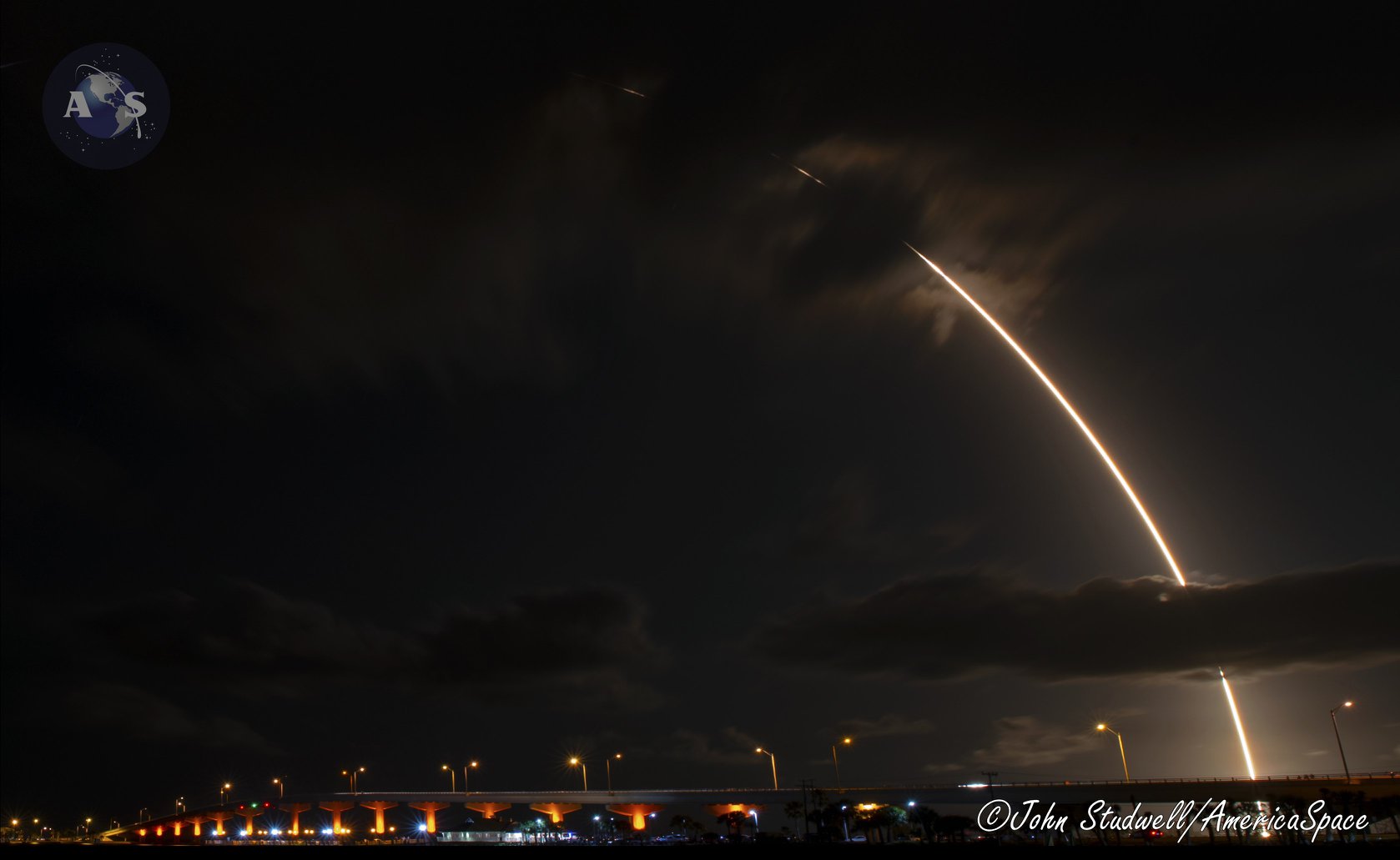
As SpaceX prepares for Sunday’s early-hours liftoff, NASA on Thursday awarded a $98.8 million contract, via the Launch Services Program (LSP), which calls for a Falcon 9 to loft SPHEREx from Space Launch Complex (SLC)-4E at Vandenberg, possibly as early as June 2024.
The two-year mission will conduct an all-sky survey at near-infrared wavelengths, as part of an overarching scientific goal of yielding new data on the origins of the Universe and the evolution of the earliest galaxies. It is expected that SPHEREx’s on-board spectrophotometer will enable measurements of more than 300 million galaxies, as well as a hundred million stars in our own Milky Way.
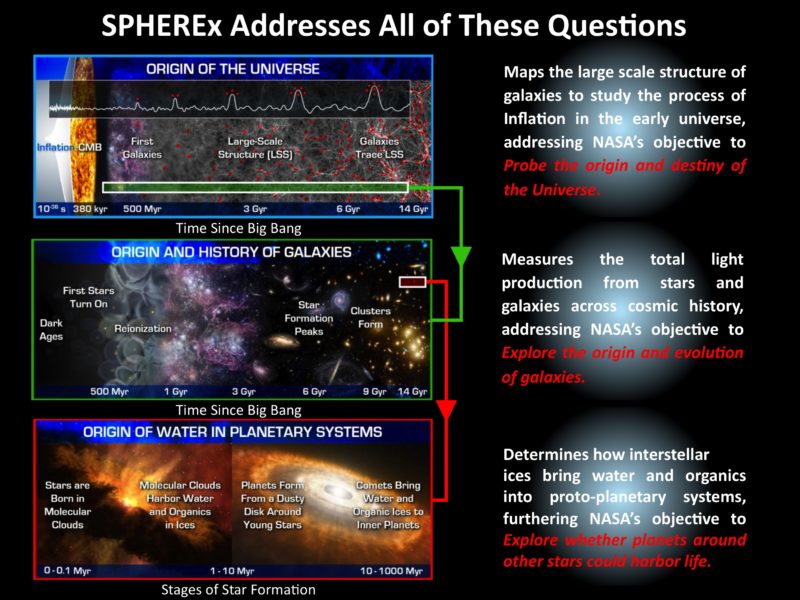
SPHEREx was selected as an Astrophysics Small Explorer Mission proposal way back in July 2015 and, alongside four other concepts, received $1 million for an initial 11-month mission concept study. Led by Principal Investigator Prof. Jamie Bock of the California Institute of Technology in Pasadena, Calif., SPHEREx was described as an “All-Sky Near-Infrared Spectral Survey” and promised to afford deep insights into the origin of the Universe, the evolution of the earliest galaxies and an exploration of the possibility that extrasolar planets might harbor life.
As circumstances transpired, SPHEREx was not ultimately selected for the Small Explorer Program, but in December 2016 it was re-submitted as a Medium-Class Explorer (MIDEX) and the following August was awarded $2 million for a nine-month concept study.
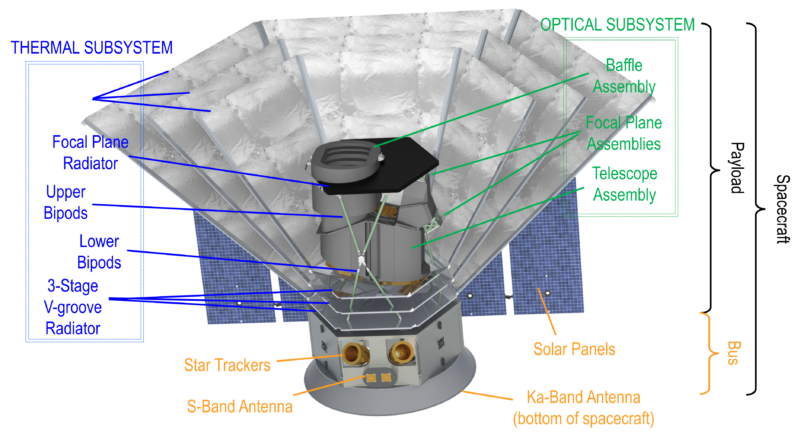
Finally, in February 2019, SPHEREx was approved as a two-year mission, funded at $242 million, and targeted to launch no earlier than 2023. Described by NASA Administrator Jim Bridenstine as “a critical part of a balanced science program that includes missions of various sizes”, the spacecraft was to be built by Ball Aerospace of Broomfield, Colo., and is based upon the firm’s “customizable and proven line” of Ball Configurable Platform (BCP) spacecraft buses. In this manner, SPHEREx will possess a similar design to the Wide-Field Infrared Survey Explorer (WISE).
SPHEREx completed its Preliminary Design Review (PDR) in December 2020, which enabled the program to move through the completion of Key Decision Point (KDP)-C and progress towards Critical Design Review (CDR).
Every six months, SPHEREx will survey the entire sky using technologies adapted from Earth satellites and interplanetary spacecraft. The mission will create a map of the entire sky in 96 different color bands, far exceeding the color resolution of previous all-sky maps. It also will identify targets for more detailed study by future missions, such as NASA’s James Webb Space Telescope—slated to launch atop Europe’s Ariane 5 later this year—and the upcoming Nancy Grace Roman Space Telescope.
“This amazing mission will be a treasure trove of unique data for astronomers,” Thomas Zurbuchen, associate administrator NASA’s Science Mission Directorate (SMD), remarked after the February 2019 contract announcement for SPHEREx. “It will deliver an unprecedented galactic map, containing “fingerprints” from the first moments in the Universe’s history. And we’ll have new clues to one of the greatest mysteries in science: What made the Universe expand so quickly, less than a nanosecond after the Big Bang?”




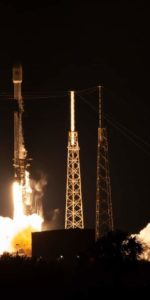

I can’t help thinking that all these hundreds of spacejunk will soon mean the end of manned space exploration as the risk factor grows. Just so people can gossip on twitter? Mindless surrounding ourselves in an aluminium cage. But I suppose if Musk etc get richer it’s OK?